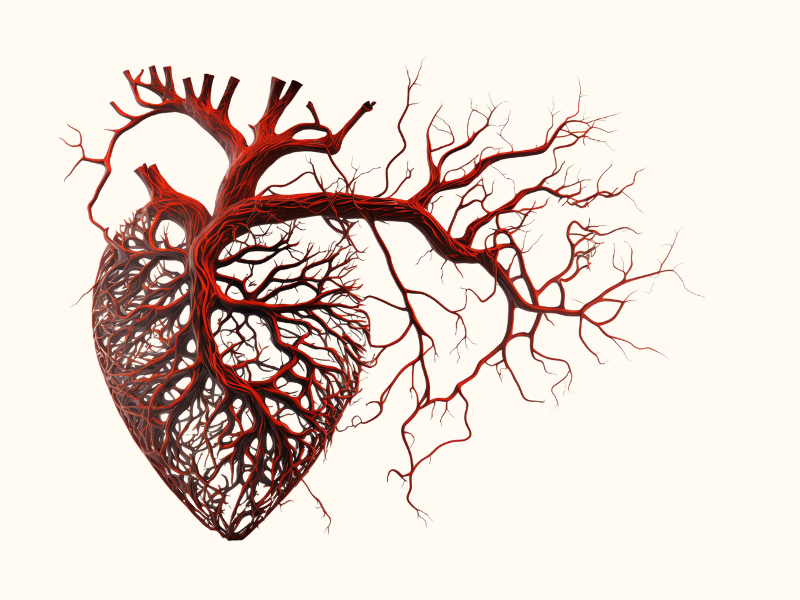07/03/2022
Allergy season — it’s bad and getting worse

As people walk around sneezing, wheezing, and itching, with stuffy, runny noses and watery eyes, they look and feel miserable during the most beautiful months of the year.
That’s because of climate change, which brings warm weather and more pollen earlier in the year, as well as increasing levels of carbon dioxide.
Plants release extra pollen when stimulated by carbon dioxide. In addition, increasingly severe storms cause flooding that can stimulate mold growth, and mold often causes allergies as well.
Pollens aren’t the only irritants: allergic reactions to dust, foods, insect bites, and even medications have been rising for the last half-century. (1) Food allergies, too, are on the increase.
The standard solutions are medications such as antihistamines, leukotriene antagonists, or steroids. Allergy testing and allergy shots are also popular, though they may take years to be truly effective, and they aren’t cheap.
What about natural allergy relief?
Allergy busters from natural nutrients
You have probably heard about mast cells, which are immune cells that play a key role in immediate allergic reactions. Most cells release potent inflammatory molecules such as histamine, cytokines, and enzymes, which can act on mucus membranes, smooth muscle, connective tissue, and more.
It is these inflammatory chemicals that trigger the uncomfortable symptoms of allergies. Mast cells play a powerful role in allergies and inflammation. (2)
Flavonoids are polyphenolic plant compounds that can inhibit histamine release and mast cell activation. A 30-year study found that asthma incidence is lower in populations with a high intake of flavonoids. (3)
Two flavonoids quercetin and luteolin
Two potent natural flavonoids, quercetin and luteolin, can offer potent antihistamine action. They possess a remarkable ability to quiet mast cell activity and inhibit histamine release, thus improving allergy symptoms.
Quercetin offers both antihistamine and anti-inflammatory activity. Quercetin is found naturally in onions, broccoli, apples, berries, grapes, spinach, kale, cranberries, as well as some herbs and teas. It has been used in Chinese medicine formulas to block allergies.
Quercetin can help stabilize the release of histamines from certain immune cells, which results in decreased symptoms like coughs, watery eyes, runny noses, hives, swollen lips or tongue, and indigestion.
In fact, it’s so effective that quercetin is used in ancient Chinese herbal formulas created to block allergies to certain foods (such as peanuts), known as food allergy herbal formulas.
Studies show that quercetin, a natural medicine and phytochemical, is equivalent at fighting allergies as some prescription medications, all with little to no side effects.
Quercetin has actually been shown to inhibit IgE antibodies, which are formed in response to antigens, including allergens. It has been utilized in asthma and allergic rhinitis. (4)
Quercetin is shown to be as effective as a medication called cromolyn sodium for stopping mast cells from releasing their inflammatory chemicals.
In two studies, quercetin significantly decreased contact dermatitis and photosensitivity, and researchers concluded that the botanical is “a promising candidate as an effective mast cell inhibitor for allergic and inflammatory diseases, especially in formulations that permit more sufficient oral absorption.” (5)
Luteolin is also a potent anti-allergic flavonoid, found in foods such as spinach, celery, carrots, olive oil, artichokes, and peppermint. Luteolin can lessen allergic symptoms and excessive mucus production. (6)Like quercetin, luteolin offers potent anti-inflammatory action, reduces mast cell activity, and strongly inhibits mast cell release of histamine. (7)
Luteolin has demonstrated a stronger inhibitory effect on the release of histamine from mast cells than even quercetin. Luteolin might be useful against itchy skin rashes and conditions. (8,9)
Overall, natural flavonoids like quercetin and luteolin exhibit potent antioxidant and anti-inflammatory activity, effectively inhibiting mast cells from releasing inflammatory molecules and histamine.
Curcumin — three polyphenols
Turmeric tea, also known as golden milk, is so popular these days that it almost seems it might eclipse coffee. Turmeric, also known as curcuma longa, has been used as an herbal remedy for thousands of years in Indian Ayurvedic and Chinese medicine.
It is the curcuminoids — three polyphenols collectively known as “curcumin” that give the root its distinctive, brilliant orange-gold hue, as well as its health benefits. Curcumin is antioxidant, anti-inflammatory, antiviral, antibacterial, and antifungal. (10)
Like quercetin and luteolin, curcumin appears to have antiallergic action and inhibit histamine release from mast cells. In animal studies, it has shown a marked inhibition of allergic responses. (11)
In humans, curcumin can dramatically reduce allergic rhinitis, with its telltale symptoms of sneezing, nasal congestion, and runny nose. One study looked at 241 individuals suffering from allergic rhinitis and offered them either curcumin or a placebo for two months.
Inflammatory molecules were significantly reduced, anti-inflammatory molecules were increased, and allergic rhinitis improved by 70% in those taking curcumin. (12)
More natural allergy relief
- Nanoemulsified Cat's Claw Elite™: Simultaneously supports the immune system and protects against invaders
- Liposomal Glutathione Complex: Potent antioxidant support for a healthy immune system
- Vitamin C is a powerful antioxidant, amazing for oxidative stress reduction, immune system, and whole-body support.
- Vitamin D appears to be involved in immune function and response. In recent years, there has been an increased interest in the role that vitamin D plays in the immune system and, in particular, allergic diseases
- Vitamin E: Research suggests vitamin E may modulate allergies and other diseases, and supplementation with vitamin E may improve symptoms of seasonal allergies.
- Magnesium: Plays a role in immune response, and deficiency may lead to increased inflammation.
- Probiotics: The “hygiene hypothesis” of allergies posits that over-sanitization has resulted in a lack of microbial stimulation to the gut immune system and therefore causes an increase in allergies.
- Yeast fermentate is a yeast compound that, together with the probiotic Lactobacillus acidophilus L-92, has demonstrated robust effects in balancing the immune response and suppressing allergy attacks.
How liposomal formulations potentiate flavonoid uptake
The benefits of many potent natural substances can be limited by poor uptake and bioavailability. Curcumin, for instance, is known to have a low rate of absorption, rapid metabolism, and quick elimination from the body. (3)
Liposomes are very small phospholipid bubbles that may be ideal carriers for therapeutic molecules, capable of delivering nutrients directly into the cell. Liposomal delivery systems have been used successfully in clinical trials for an astonishing variety of therapeutics.
Because they are prepared from natural phospholipids, they are biocompatible and nontoxic. Liposomal delivery systems are becoming increasingly popular for nutraceuticals.
Liposomal formulations have been shown to effectively increase curcumin uptake. (14) “Fat has been added to turmeric preparations in the kitchen and at the apothecary’s workbench since time immemorial,” write two researchers. “There is likely more than a smidgeon of cultural wisdom in such practices with respect to simple, qualitative bioavailability.” (15)
Quercetin and luteolin, too, have been shown to be well absorbed in a liposomal formulation. Altogether, the three offer potent natural allergy relief. (16-18)
Not to be forgotten in all this talk of flavonoids and allergy, of course, is vitamin C. Vitamin C is well known for its anti-allergic, antioxidant and anti-histamine effect, and during any stress, including allergies, the demand for vitamin C skyrockets.
In a liposomal format, using a gentle buffered vitamin C that is well tolerated and unlikely to lead to gastrointestinal distress, the vitamin can be helpful in dampening allergic reactions. Vitamin C encapsulated in liposomes has greater uptake and effect than standard, oral formulations. (19)
Read more on the health topic
References
- Pawanker R, Canonica GW, et al. White Book on Allergy 2011-2012 Executive Summary. World Health Organization
- Amin K. The role of mast cells in allergic inflammation. Respir Med. 2012 Jan;106(1):9-14. View Abstract
- Knekt P, Kumpulainen J, et al. Flavonoid intake and risk of chronic diseases. Am. J. Clin. Nutr. 2002; 76:560-568 View Abstract
- Micek J, Jurikova T Quercetin and Its Anti-Allergic Immune Response. Molecules. 2016 May 12;21(5). View Abstract
- Weng Z, Zhang B. et al. Quercetin is more effective than cromolyn in blocking human mast cell cytokine release and inhibits contact dermatitis and photosensitivity in humans. PLoS One. 2012;7(3):e33805. View Abstract
- Kimata M, Inagaki N et al. Effects of Luteolin and Other Flavonoids on IgE-Mediated Allergic Reactions. Planta Med. 2000 Feb;66(1):25-9. View Abstract
- Amellal M, Bronner C, et al. Inhibition of mast cell histamine release by flavonoids and biflavonoids. Planta Med.1985;51(1):16-20. View Abstract
- Amellal M, Bronner C, et al. Inhibition of mast cell histamine release by flavonoids and bioflavonoids. Planta Med. 1985;51(1):16-20. View Abstract
- Jeon IH, Kim HSet al. Anti-inflammatory and antipruritic effects of luteolin from Perilla (P. frutescens L.) leaves. Molecules. 2014 May 27;19(6):6941-51 View Abstract
- Aggarwal BB, Harikumar KB. Potential therapeutic effects of curcumin, the anti-inflammatory agent, against neurodegenerative, cardiovascular, pulmonary, metabolic, autoimmune and neoplastic diseases. Int J Biochem Cell Biol. 2009 Jan;41(1):40-59. View Full Paper
- [11]Kurup VP, Barrios CS. Immunomodulatory effects of curcumin in allergy. Mol Nutr Food Res. 2008 Sep;52(9):1031-9. View Abstract
- Sihai Wu, Dajiang Xiao. Effect of curcumin on nasal symptoms and airflow in patients with perennial allergic rhinitis
- Li X, Uehara S, Sawangrat K. Improvement of intestinal absorption of curcumin by cyclodextrins and the mechanisms underlying absorption enhancement. Int J Pharm. 2017 Nov 18;535(1-2):340-349.
- Jaisamut P, Wiwattanawongsa K, et al. Enhanced Oral Bioavailability of Curcumin Using a Supersaturatable Self-Microemulsifying System Incorporating a Hydrophilic Polymer; In Vitro and In Vivo Investigations. AAPS PharmSciTech. 2017 Oct 3.
- Douglass BJ, Clouatre DL. Beyond Yellow Curry: Assessing Commercial Curcumin Absorption Technologies. Review. J Am Coll Nutr. 2015;34(4):347-58. View Abstract
- Dryn DO, Melnyk M. Liposomal quercetin potentiates maxi-K channel openings in smooth muscles and restores its activity after oxidative stress.J Liposome Res. 2018 Apr 19:1-8 View Abstract
- Soloviev A1, Tishkin S Quercetin-filled phosphatidylcholine liposomes restore abnormalities in rat thoracic aorta BK(Ca) channel function following ionizing irradiation. Sheng Li Xue Bao. 2009 Jun 25;61(3):201-10. View Abstract
- Huang M, Su E, et al. Encapsulation of flavonoids in liposomal delivery systems: the case of quercetin, kaempferol and luteolin. Food Funct. 2017 Sep 20;8(9):3198-3208 View Abstract
- Davis JL, Hunter L et al. Liposomal-encapsulated ascorbic acid: influence on Vitamin C bioavailability and capacity to protect against ischemia-reperfusion injury. Nutr Metab Insights. 2016; 9: 25–30.View Full Paper






